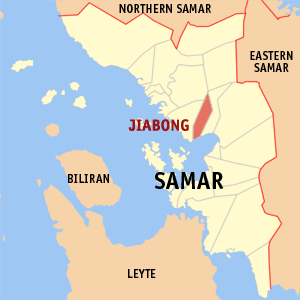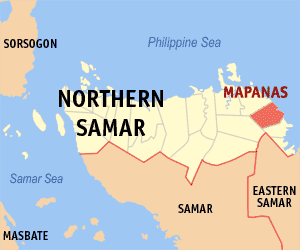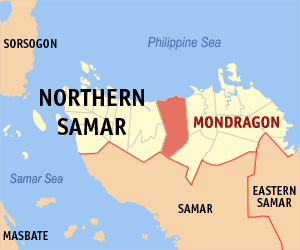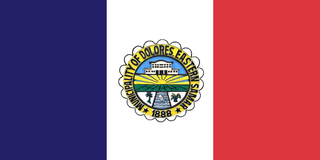
Jiabong, officially the Municipality of Jiabong, is a 5th class municipality in the province of Samar, Philippines. According to the 2020 census, it has a population of 19,205 people.

Matuguinao, officially the Municipality of Matuguinao, is a 5th class municipality in the province of Samar, Philippines. According to the 2020 census, it has a population of 7,364 people.

San Jose de Buan, officially the Municipality of San Jose de Buan, is a 4th class municipality in the province of Samar, Philippines. According to the 2020 census, it has a population of 7,767 people.

Talalora, officially the Municipality of Talalora, is a 6th class municipality in the province of Samar, Philippines. According to the 2020 census, it has a population of 7,856 people.

Gamay, officially the Municipality of Gamay, is a 4th class municipality in the province of Northern Samar, Philippines. According to the 2020 census, it has a population of 23,367 people.

Mapanas, officially the Municipality of Mapanas, is a 5th class municipality in the province of Northern Samar, Philippines. According to the 2020 census, it has a population of 14,234 people.

Mondragon, officially the Municipality of Mondragon, is a 3rd class municipality in the province of Northern Samar, Philippines. According to the 2020 census, it has a population of 41,415 people.

Balangkayan, officially the Municipality of Balangkayan, is a 5th class municipality in the province of Eastern Samar, Philippines. According to the 2020 census, it has a population of 10,185 people.

Can-avid, officially the Municipality of Can-avid, is a 4th class municipality in the province of Eastern Samar, Philippines. According to the 2020 census, it has a population of 21,682 people.

Dolores, officially the Municipality of Dolores, is a 3rd class municipality in the province of Eastern Samar, Philippines. According to the 2020 census, it has a population of 44,626 people.

Jipapad, officially the Municipality of Jipapad, is a 5th class municipality in the province of Eastern Samar, Philippines. According to the 2020 census, it has a population of 8,439 people.

Llorente, officially the Municipality of Llorente, is a 3rd class municipality in the province of Eastern Samar, Philippines. According to the 2020 census, it has a population of 21,459 people.

Maslog, officially the Municipality of Maslog, is a 5th class municipality in the province of Eastern Samar, Philippines. According to the 2020 census, it has a population of 5,463 people.

Maydolong, officially the Municipality of Maydolong, is a 4th class municipality in the province of Eastern Samar, Philippines. According to the 2020 census, it has a population of 15,314 people.

Mercedes, officially the Municipality of Mercedes, is a 5th class municipality in the province of Eastern Samar, Philippines. According to the 2020 census, it has a population of 6,112 people.

Quinapondan, officially the Municipality of Quinapondan, is a 5th class municipality in the province of Eastern Samar, Philippines. According to the 2020 census, it has a population of 14,507 people.

Salcedo, officially the Municipality of Salcedo, is a 5th class municipality in the province of Eastern Samar, Philippines. According to the 2020 census, it has a population of 22,136 people.

San Policarpo, officially the Municipality of San Policarpo, is a 5th class municipality in the province of Eastern Samar, Philippines. According to the 2020 census, it has a population of 15,365 people.

Taft, officially the Municipality of Taft, is a 4th class municipality in the province of Eastern Samar, Philippines. According to the 2020 census, it has a population of 18,786 people.

Catbalogan, officially the City of Catbalogan, is a 5th class component city and capital of the province of Samar, Philippines. According to the 2020 census, it has a population of 106,440 people.























